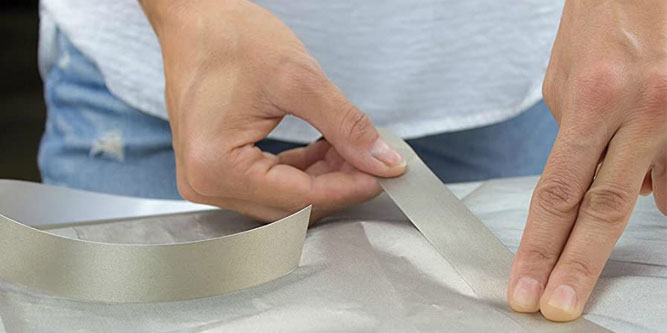These days, we’re surrounded by electromagnetic (EM) radiation. Sometimes called EMF, for “electromagnetic fields”, this radiation takes many forms. Cell phone signals, WiFi, and even Bluetooth use EMF to transmit their signals. Even old fashioned radio waves are a form of EMF.
Now, there are some myths that all EMF is unhealthy. This couldn’t be further from the truth. EMF can be good, bad, or indifferent depending on the frequency. Take sunlight, for example. The sun gives us visible, infrared, and ultraviolet light, all of which are essential for life on earth. But too much UV light can also give you cancer, which is obviously bad.
For most people, WiFi, cell phones, and other communications frequencies are not a concern. These frequencies are what’s called “non-ionizing,” which means they don’t have enough energy to break nuclear bonds. There’s simply no way for them to destroy your cells’ DNA and cause cancer. That said, some people are particularly sensitive to EMF radiation, and need protection to alleviate their symptoms.
There are also many practical reasons you might want to block EMF signals. For example, sound engineers make extensive use of EMF shielding. Audio cables are particularly sensitive to interference, and need to be isolated as much as possible.
For these and other reasons, you might find yourself in need of some Faraday tape. We set out to find the three best Faraday tapes possible, and now we’re about to present our findings.
When choosing Faraday tapes, we tried to focus on those that come from reliable brands. There are a lot of unscrupulous companies that try to take advantage of people’s health concerns. We stuck with reputable companies with a history of making EMF-blocking materials. Of course, that doesn’t mean all of these tapes are right for you. To really find out how they work, we’ll need to take a closer look. Let’s do that, and see how they compare!
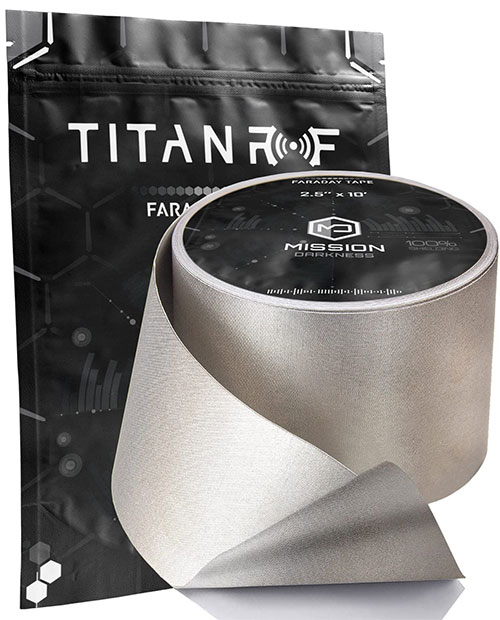
Best Overall: TitanRF Faraday Tape
The TitanRF Faraday Tape is manufactured by Mission Darkness, an established player in the EMF protection business. Not too long ago, we reviewed their EMF and 5G radiation blanket. It impressed us with its high overall quality and comfort. Since Mission Darkness puts a lot of work into all aspects of design, we decided to return to the well.
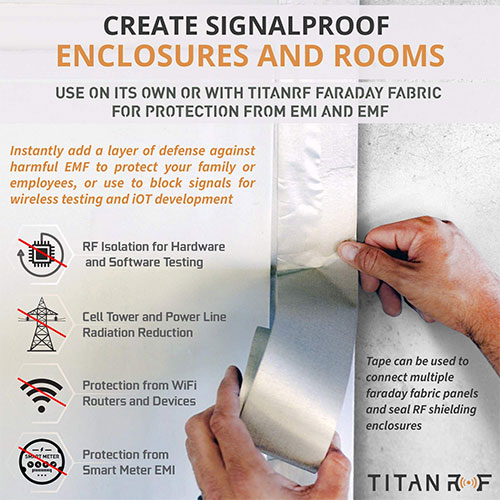
The TitanRF Faraday Tape is available in multiple lengths and sizes, to accommodate a variety of needs. To begin with, you can order any width of tape in 10- or 164-foot lengths. The 10-foot lengths are really meant for single projects, while the larger rolls are for longer-term use. In terms of width, you can choose, 1-inch, 2.5 inches, or 10 inches. The first two are what we’d think of as a traditional tape. The 10-inch option probably won’t be much use for repairs or patching. However, it’s great for use as a liner, especially if you’re lining a larger enclosure. You can skip using Faraday fabric and just stick this tape all over the inside.
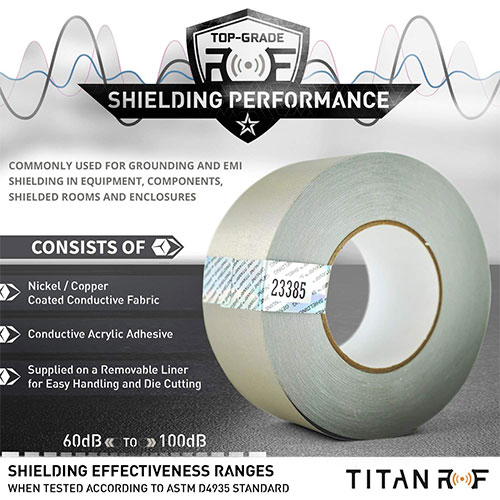
The material itself is made from a nickel and copper blend. This is a popular material for Faraday fabric, because of its versatility. The copper is the more conductive material, but it can tend to snap after multiple flexes. The nickel is less conductive, but more durable. By blending the two, you get a long-lasting material that can be twisted, folded, and otherwise manipulated. There’s a fine, visible mesh when you look at the surface, and it has a silvery color to it. This should match well with most Faraday fabrics.
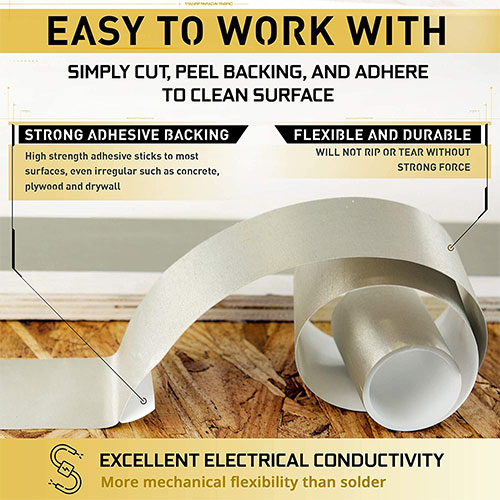
One thing we very much liked about the TitanRF tape is the conductive acrylic adhesive. Because the adhesive itself is conductive, you get even better protection from any EM radiation. There’s a peel-away backing to keep this adhesive safe, but be warned. Once the backing is removed, the adhesive will dry within a couple of hours. After that, it won’t stick again. You can scrape it off a surface if you want to, but it’s not reusable. That said, it’s very easy to apply and reposition during the first several minutes.
This tape reduces EMF radiation by between 60dB and 100dB. The exact amount of signal attenuation depends on the specific frequency. Keep in mind that this rating assumes perfect placement, under laboratory conditions. A lot of the tape’s effectiveness will depend on how you’re using it.
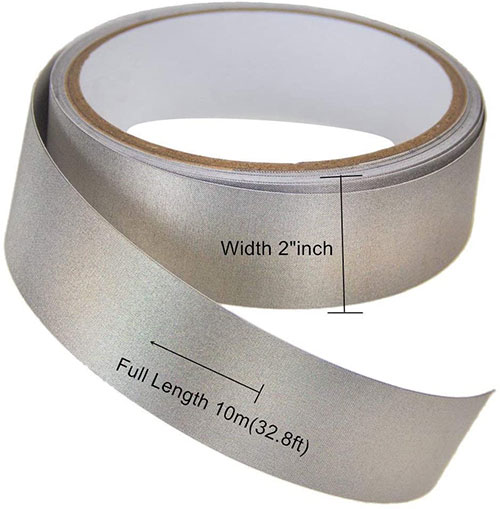
Best Runner-Up: Amradield Faraday Tape
Amradield is another well-respected company in the industry. We recently reviewed their Faraday fabric, and it was one of the better ones out there. It didn’t just provide a decent measure of radiation protection. It was also the most supple and flexible of the Faraday fabrics we reviewed.
The Amradield Faraday Tape is designed with a similar philosophy in mind. Amradield achieves this by using polyester in addition to the traditional copper/nickel material. By using a polyester substrate, the material is extraordinarily flexible, and can even be folded in half. As a result, this tape is a great choice for all kinds of applications that require extreme flexibility. If you’re making a pouch, for example, you can use it to fold over the seams and provide some reinforcement. It’s also great for getting into the corners of enclosures, since it can form a clean 90-degree angle.
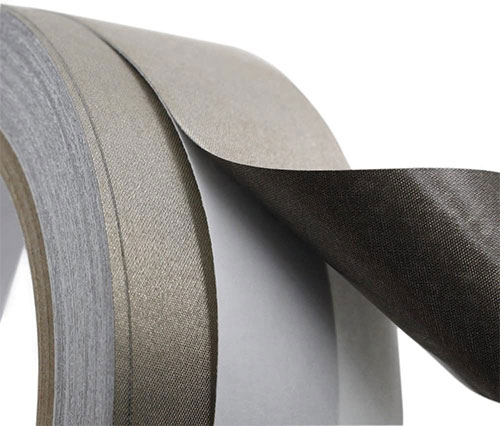
This tape comes in one size: 2 inches wide and 32.8 inches long. This is plenty for a mid to large-sized project, and smaller projects will leave you with plenty to spare. The material itself is silver-grey in color, with a slight copper tinge. While the adhesive isn’t conductive, there’s still a peel-away backing. This ensures that the top layer of tape isn’t leaving any sticky residue on the layers beneath. The outer surface of your tape will be smooth and clean, like a fresh piece of cloth.
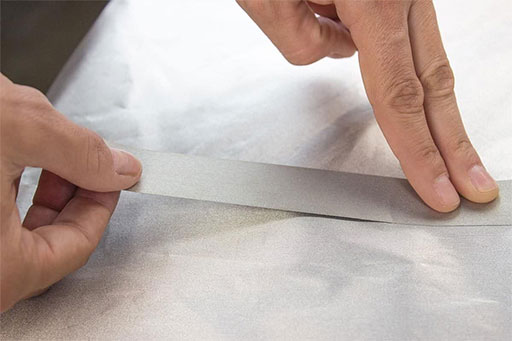
The Amradield tape provides an average of 85dB of signal attenuation. Keep in mind that this is an average, and can be less or more depending on the frequency. Either way, you’re looking at a very large reduction of any EMF radiation. Not only that, but Amradield provides a 60-day satisfaction guarantee. If you’re not pleased with your results, just send back any unused product for a full refund. This makes their tape a relatively low-risk proposition, even for those who are skeptical.
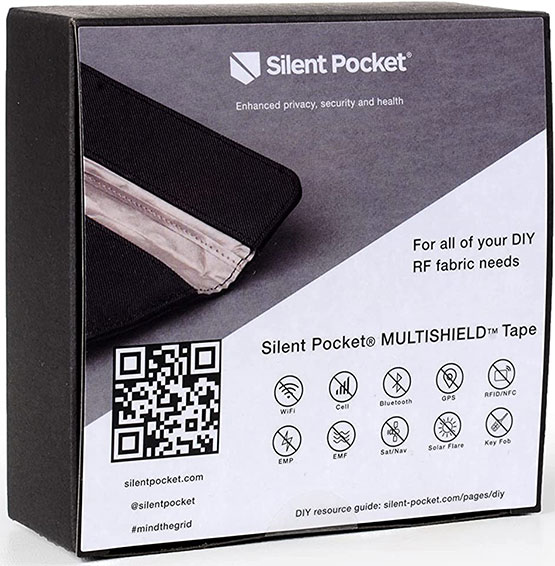
Best Alternative: Silent Pocket MULTISHIELD Faraday Tape
Silent Pocket is named for their flagship product, their EMF phone pouch. But they also sell related supplies, such as Faraday fabric and the Silent Pocket MULTISHIELD Faraday Tape.
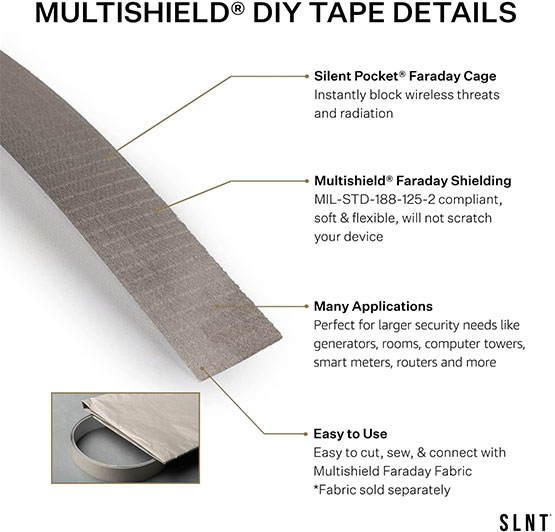
This tape is perfect for small projects, like making your own pouch or bag. It’s only available in a 1-inch wide, 10-foot long roll, so it only works if you need narrow tape. But if that’s what you need, it’s an excellent choice. It’s very soft and flexible, and it sports a peel-away backing to keep the surface clean.
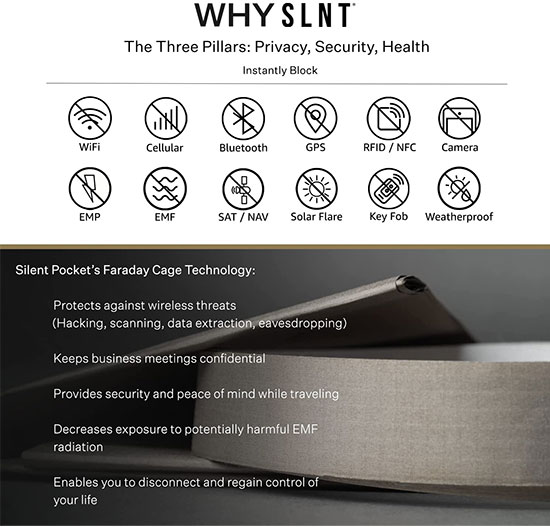
Silent Pocket doesn’t say exactly what their material is, except that it’s “MULTISHIELD”. That said, from the silver-tan color, we assume it’s made of a standard nickel/copper composite. Regardless, it works very well. Depending on the EMF frequency, you can get up to 100dB of signal attenuation.
What is Faraday Tape?
What is Faraday tape, and how does it work? Faraday tape is tape that’s made from Faraday fabric, which in turn is based on the Faraday cage. Faraday cages have been around for a long time. They were invented by Michael Faraday in the 19th century, to protect scientists and inventors. These cages were designed to keep people safe when working with electricity, which was still poorly-understood.
The first Faraday cages were aptly named – they were literal cages that you could stand inside. Inside of the cage, you were completely safe from outside electrical charges. The cages were built from conductive metal, laid out in a particular pattern.
As a matter of fact, the design is so effective that it’s still in used today. Vehicle frames, for example, are designed to channel lightning strikes into the ground, protecting the people inside. Along the same lines, Faraday cage technology is built into many military facilities. Wireless signals won’t be able to come in or out, which helps keep sensitive computers safe.
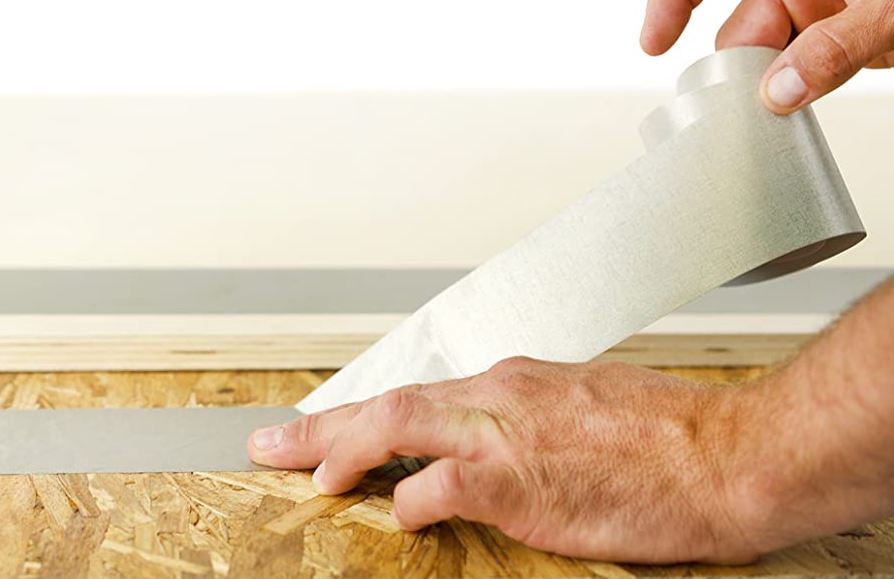
How Does Faraday Tape Work?
If you’ve been following along, you might be a bit confused. How does a cage that’s designed to protect against electricity protect you from EM radiation? The answer is that a Faraday cage creates a giant, polarized space. Negatively charged particles flow to one side of the cage, and positively charged particles to the other.
Inside of the cage, the net electric charge is zero. This principle, called electrostatic induction, is also used in many modern technologies. Wireless chargers use electrostatic induction to charge a battery by creating a magnetic field. Induction stoves use a magnet to heat your cast iron pot without using a hot burner.
The thing about a Faraday cage is that it maintains its polarized nature, even in the presence of a static charge. Latent static in the air is enough to keep the space inside protected. Because there’s a small magnetic field, EM radiation inside the cage is reduced. Faraday fabric uses the same principle, but with metallic threads instead of a cage. If the fabric is made from the right kind of a conductive mesh, it can create a mini Faraday cage. That said, there are some limitations to this technology that it’s important to understand.
For one thing, Faraday fabrics need to be flexible. This is the same for Faraday tape, which is made of Faraday fabric. As you can imagine, this limits the amount of material that can be used in the threads. In other words, a single layer is not always enough to provide complete protection. If you’re not getting the performance you need from a single layer, it can help to use more than one.
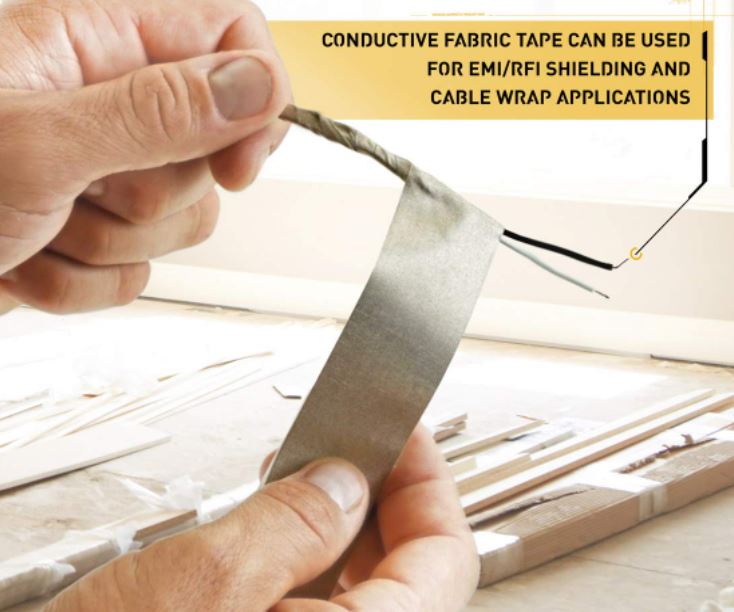
Faraday Cages Must Be Fully Enclosed
Another thing to keep in mind is that Faraday cages need to fully enclose an object to be 100% effective. The more gaps there are, the less protection there is. This is often an issue when you use a Faraday bag or other similar enclosure. Poorly-designed Faraday bags have low-quality closures, which leave gaps. It can also be a problem if you’re making your own bag.
If you’re trying to shield an enclosure like a speaker box, it can be a real headache. It’s tough to line up different pieces of fabric correctly, without any gaps. It’s also hard to get good shielding when you’re stitching different panels together, or putting screws through your fabric.
That’s where Faraday tape comes in. Faraday tape can be used to help craft your own pouches and carrying bags. You can use it to cover screws, and gaps between different pieces of Faraday fabric. These tapes are also great for wrapping bundles of wires, and other irregular objects.
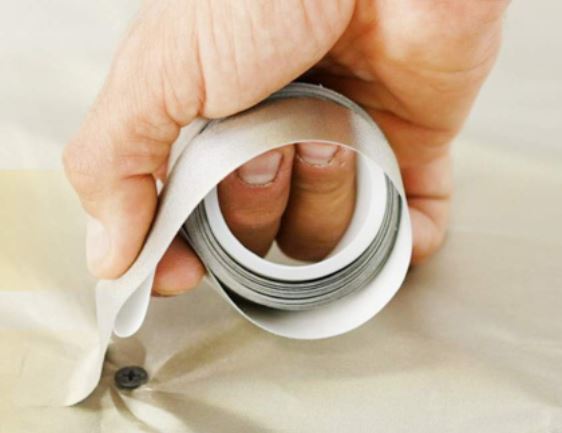
Which Faraday Tape is Best for You?
So, which of these Faraday tapes is the best choice for you? Depending on what you need, you could make a good argument for any one of them.
We began by looking at the TitanRF Faraday Tape. This tape is the most flexible of the bunch in terms of applications. Because it comes in so many widths and lengths, it can be used for almost anything, even as a liner. It’s also just as effective as the others, with up to 100dB of EMF shielding.
The Amradield Faraday Tape is the most flexible of the bunch in the literal sense. It can flex and fold and maintain its effectiveness, which makes it very versatile. That said, it only comes in a two-inch width, so there are many applications for which it remains unsuited.
The Silent Pocket MULTISHIELD Faraday Tape is a great choice if you need a narrower tape. It’s one inch wide, and it’s flexible and durable enough for use on a bag or pouch. This is an excellent tape for repairs, and offers an impressive 100dB of signal attenuation.
Meet Ry, “TechGuru,” a 36-year-old technology enthusiast with a deep passion for tech innovations. With extensive experience, he specializes in gaming hardware and software, and has expertise in gadgets, custom PCs, and audio.
Besides writing about tech and reviewing new products, he enjoys traveling, hiking, and photography. Committed to keeping up with the latest industry trends, he aims to guide readers in making informed tech decisions.

